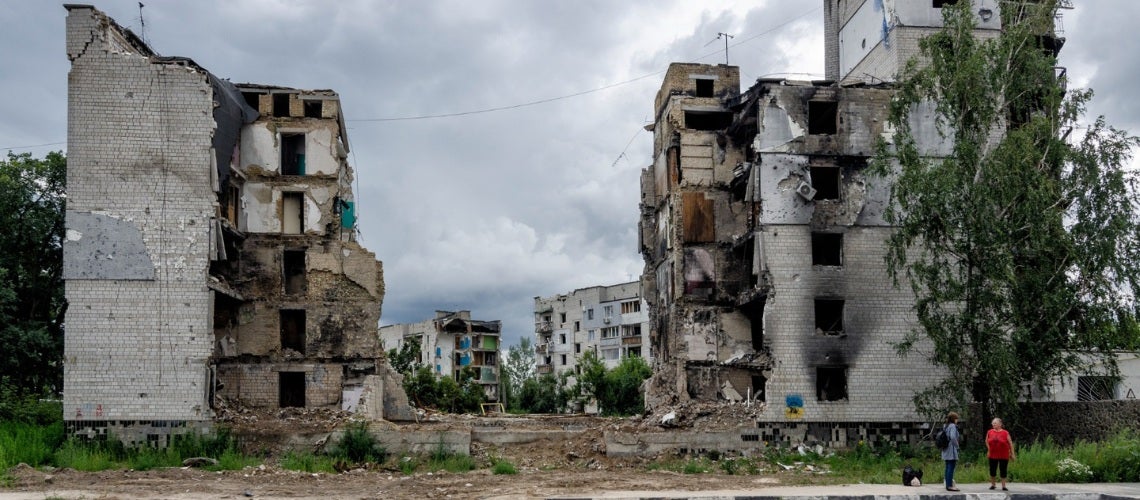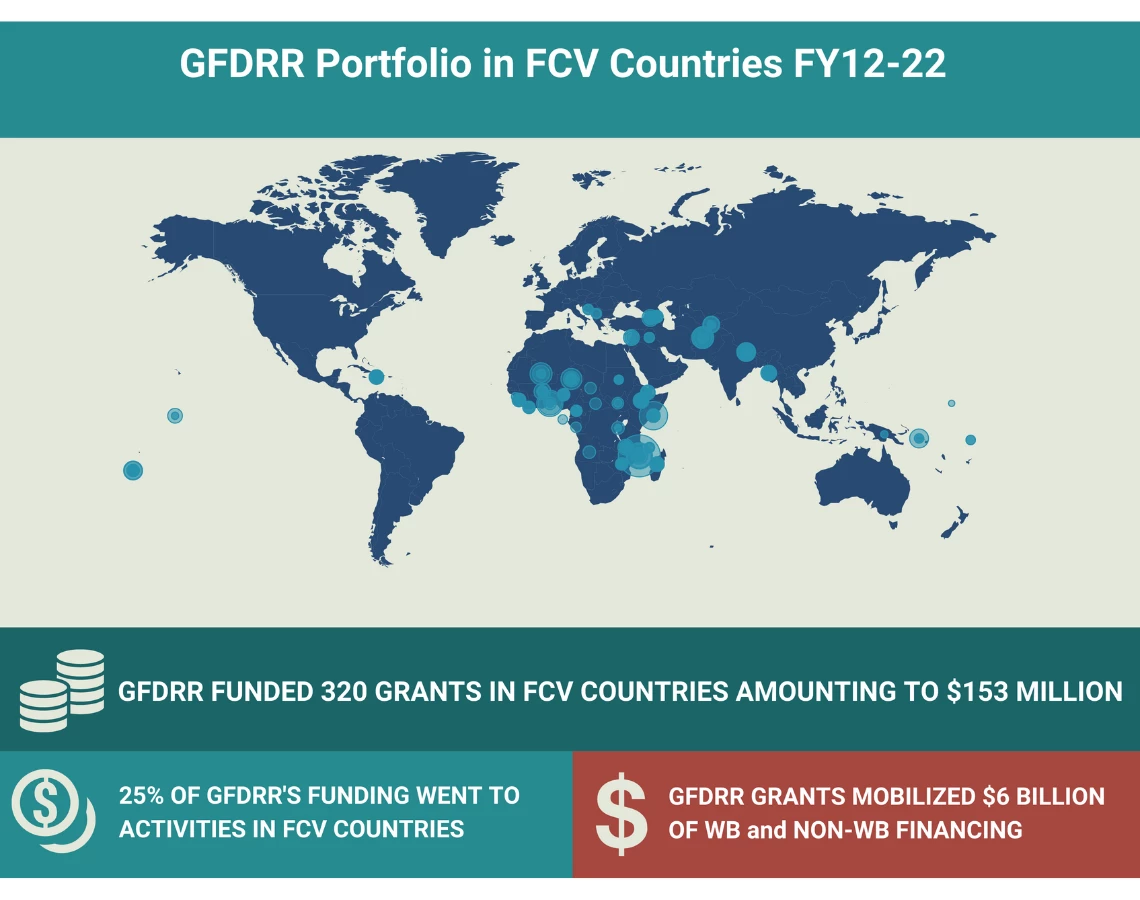 Photo credit: Ukraine 2023/World Bank
Photo credit: Ukraine 2023/World Bank
Globally, the number of countries affected by fragility, conflict, and violence (FCV) is on the rise. These communities face challenges that increase their exposure to disasters, endanger their lives and livelihoods, and restrict their access to essential goods and services needed for risk reduction, response, and recovery efforts. By 2030, up to two-thirds of the global extreme poor may be living in fragile and conflict-affected situations, necessitating intensified action to meet global poverty goals.
Disasters don't just result from natural events; they are also a factor of human vulnerability, and asset exposure to hazards. How we reduce risk to disasters, prepare for and respond to them can both trigger and amplify conflicts. Interestingly, these very situations also present an opportunity: to reduce conflicts, foster cooperation, and build peace. The Disaster-FCV Nexus is a priority for the Global Facility for Disaster Reduction and Recovery (GFDRR) which provides technical assistance, knowledge sharing, capacity building, and funding for disaster risk management (DRM). One-fourth of GFDRR’s funding goes to World Bank teams working in FCV countries to help address the most pressing needs.
To take stock of lessons learned and best practices, GFDRR conducted a portfolio review of World Bank’s DRM interventions in FCV settings that help countries better understand and reduce their vulnerability to natural hazards and climate change. The exercise, looking at activities between 2012 and 2022, also builds on the Independent Evaluation Group’s report which calls for country engagement and project design to respond to the related effects of disasters and FCV.
Here are the three main findings of this study:
- World Bank lending in FCV countries increased more than 3.5 times since 2012, reaching approximately $22 billion in 2022. Over this 10-year period, the World Bank supported the design, preparation, or implementation of more than 1,800 lending operations in FCV countries (26% of all World Bank operations during that period) with funding of more than $140 billion. These operations focused on health, macroeconomics, urban and disaster risk management, social protection, and education.
- Shifting DRM Paradigm: Instead of merely responding post-crisis, there's a visible shift towards proactive preparations for emergencies. Approximately 17% of the World Bank projects in FCV countries included DRM interventions. The most common pre-emergency interventions include strengthening countries’ emergency preparedness capacities and early warning systems, making resilient investments like retrofitting public buildings (e.g., schools, health centers), implementing building regulations for more resilient built environments, and meeting internationally accepted building standards. Some of these interventions were related to risk financing, enabling governments to secure access to immediate liquidity for post-disaster responses.
- One-fourth of GFDRR’s funding went to activities in FCV countries. GFDRR provided diverse support for DRM activities, tailored to different regions and countries, including (i) technical assistance to integrate DRM and enhance capacity, (ii) conducting needs assessments and developing recovery frameworks, (iii) promoting urban resilience, (iv) establishing early warning systems and enhancing hydrological and meteorological services; and (v) strengthening infrastructure resilience. Over this period of time, GFDRR implemented 320 grants in FCV countries, amounting to $153 million, and mobilized $6 billion of development financing from the World Bank and partners.
Implementation Insights: Voices from the Field
Feedback from World Bank staff and governments who implemented these grants and investment projects reveals critical insights.
- Understanding Fragility for Better Disaster Resilience: Employing a fragility lens shapes a better understanding of the local context and informs the design and implementation of Bank operations. This ensures that DRM projects meet the needs of local communities, are sustainable, and effectively prepare for and respond to disasters.
- The Need for Integrated Analytics: Integrating hazard/risk data with an analysis of FCV drivers is imperative. This comprehensive approach yields a multi-dimensional risk map, guiding countries toward effective risk mitigation.
- Stakeholder Engagement is Key: Engaging a broad spectrum of stakeholders, including local communities and civil society, is essential. This inclusive approach addresses governance challenges, ensures sustainability, and enriches DRM initiatives with local knowledge.
These findings play a vital role in understanding effective approaches and addressing the connection between disasters, fragility and conflict. They provide valuable insights to bridge the existing gaps in operational and technical capacity. Moreover, they offer ideas and inspiration to partner governments seeking to tackle the compounding risks and impacts of disasters. By mobilizing additional development finance, these findings can further support efforts to enhance disaster resilience in FCV settings.




Join the Conversation